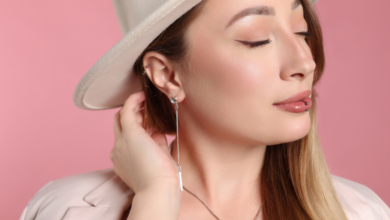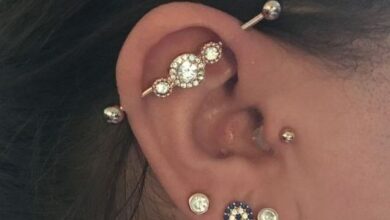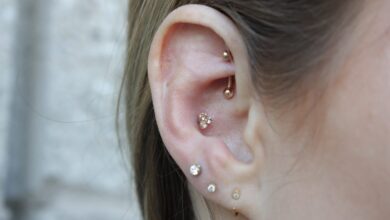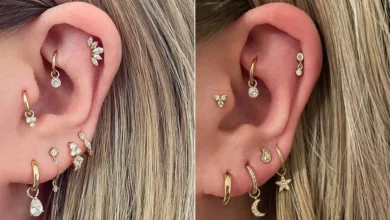
In this article, you will learn about the origins of daith piercings in Jewish culture. You’ll also discover that the cost of daith piercings can vary, depending on location and choice of jewelry. We will discuss the different materials commonly used for daith piercings and popular jewelry options. Additionally, you’ll explore the possible benefits of daith piercings in alleviating migraines, although scientific evidence is limited. We’ll delve into the healing process and aftercare for daith piercings, as well as potential side effects and the importance of professional assistance when changing jewelry.
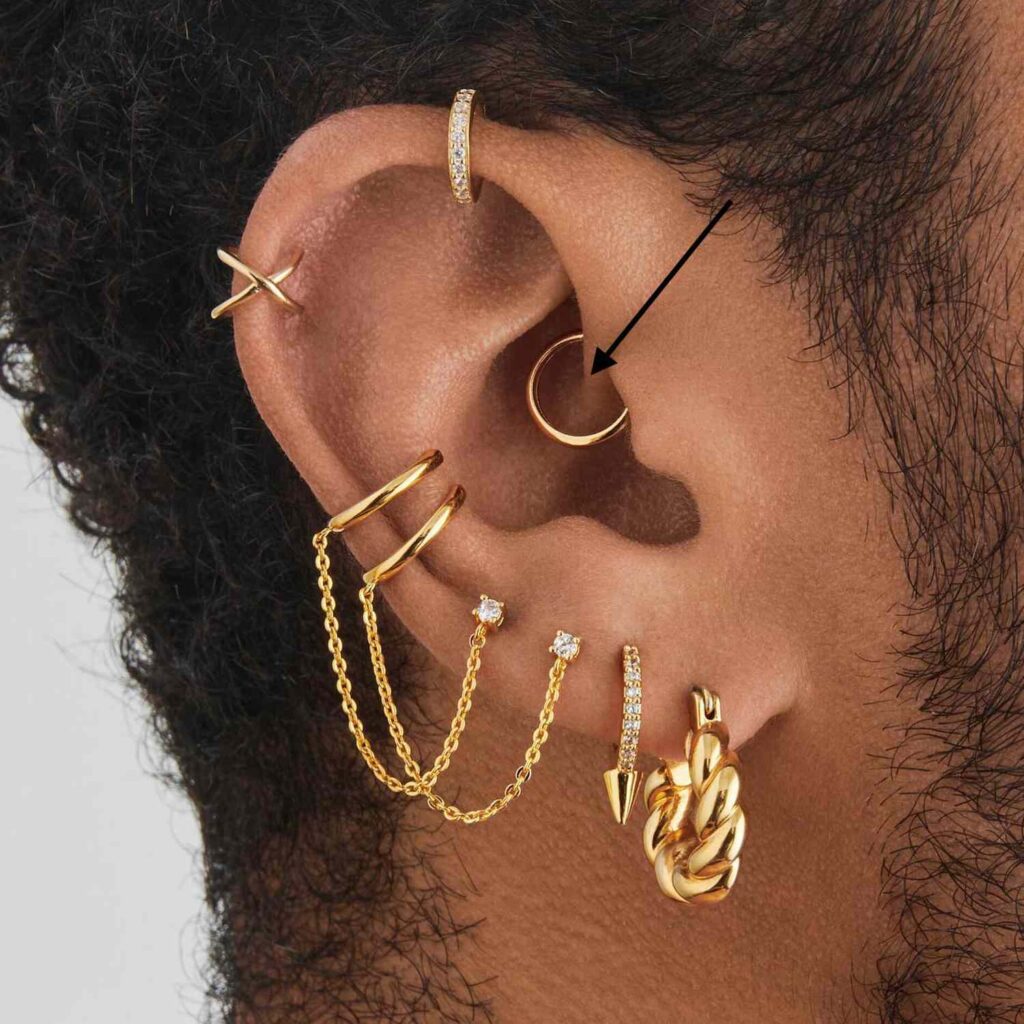
The Origins of Daith Piercings in Jewish Culture
Daith piercing is a unique style of ear piercing that has gained popularity in recent years. It involves piercing the cartilage on the inside of the ear, creating a small hoop that hugs the inner crease. While daith piercings may seem like a modern trend, they actually have origins in Jewish culture.
Origins of Daith Piercings
The exact origins of daith piercings in Jewish culture remain unclear, as the tradition has evolved over time. However, it is believed that daith piercings may have originated as a cultural and religious practice among Jewish communities.
One theory suggests that daith piercings were seen as a form of adornment and a way to express one’s connection to their faith. In Jewish culture, jewelry and body adornment have long played a significant role in religious ceremonies and celebrations. It is possible that daith piercings initially held deep symbolic meaning within Jewish communities.
Daith Piercings in Jewish Culture
Today, daith piercings are not commonly associated with Jewish culture and are more often seen as a fashion statement or personal choice. However, some individuals of Jewish descent may choose to embrace the historical significance of daith piercings and incorporate them into their own personal style.
While the origins of daith piercings in Jewish culture may be subject to interpretation, it is important to approach this topic with respect and sensitivity. Each individual’s decision to get a daith piercing should be regarded as a personal choice, and cultural significance should be acknowledged without generalization or appropriation.
The Cost of Daith Piercings
When considering getting a daith piercing, one of the factors that may come to mind is the cost. The cost of daith piercings can vary depending on several factors, including the location of the piercing studio and the choice of jewelry.
Range of Cost
On average, daith piercings can cost anywhere from $30 to $80. However, it is essential to note that these prices are only estimates and can vary significantly depending on various factors.
Factors Affecting Cost
The cost of daith piercings can be influenced by several factors, including the location of the piercing studio. In urban areas or popular tourist destinations, prices may be higher due to increased demand and overhead costs.
Another factor that can impact the cost is the choice of jewelry. Higher-quality jewelry made from implant-grade materials may have a higher price tag than less expensive options. It is essential to consider not only the upfront cost of the piercing but also the long-term investment in high-quality jewelry to ensure proper healing and minimize the risk of complications.
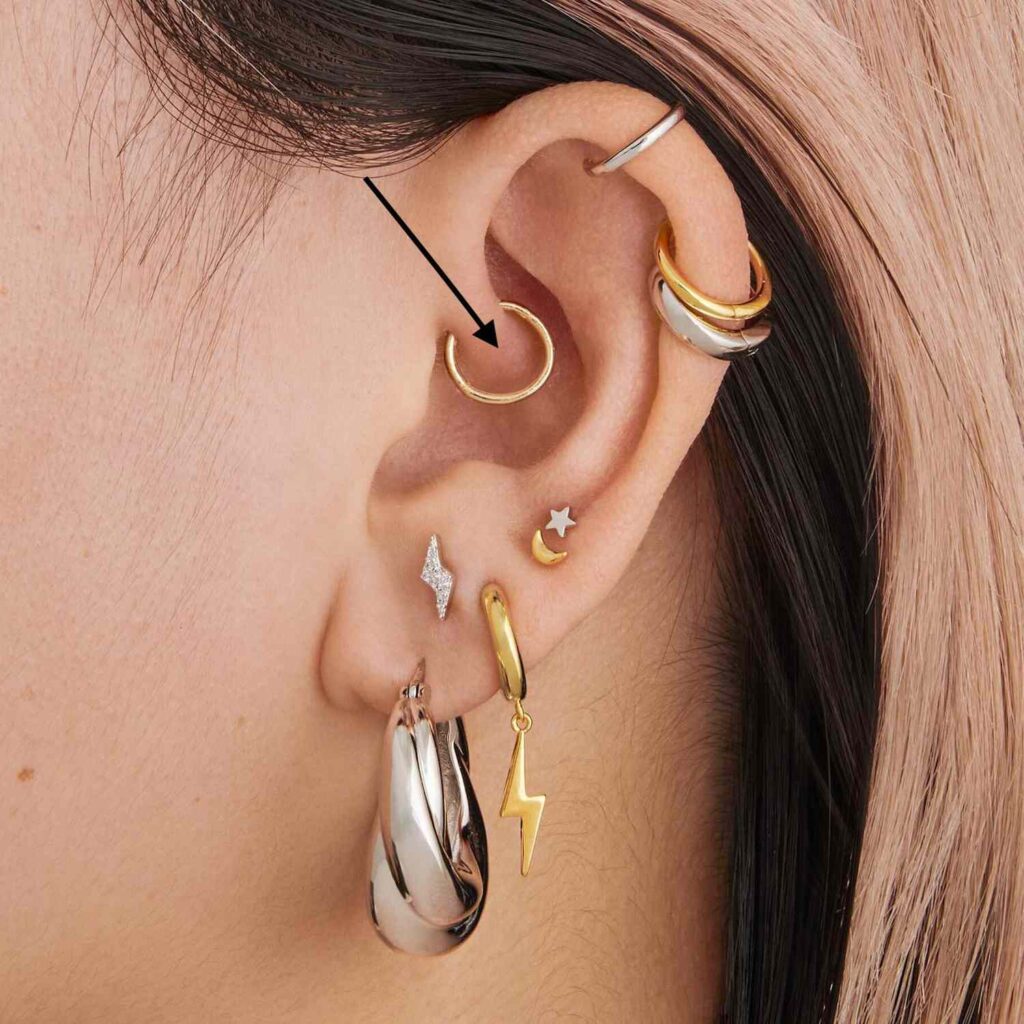
Materials Used for Daith Piercings
When it comes to daith piercings, the choice of materials used is crucial for both aesthetics and long-term healing. Implant-grade materials are the preferred choice for daith piercings due to their biocompatibility and durability.
Implant-Grade Materials
Implant-grade materials are hypoallergenic and designed for use in medical implants. They are specifically formulated to minimize the risk of adverse reactions and promote optimal healing. Stainless steel, niobium, and titanium are commonly used implant-grade materials for daith piercings.
Stainless steel is a popular choice due to its affordability and durability. It is resistant to rust and corrosion, making it suitable for everyday wear. Niobium is a lightweight and highly biocompatible material that is often preferred by individuals with metal sensitivities. Titanium is another excellent choice, known for its strength, corrosion resistance, and lightweight properties.
Commonly Used Materials
While implant-grade materials are recommended, some individuals may opt for less expensive alternatives. Surgical stainless steel and high-quality gold are also commonly used materials for daith piercings. However, it is crucial to ensure that the materials used are hypoallergenic and suitable for long-term wear to avoid potential complications or allergic reactions.
Popular Jewelry Options for Daith Piercings
After getting a daith piercing, choosing the right jewelry is an exciting part of the process. There are several popular options available that can enhance the aesthetics of the piercing and reflect personal style.
Captive Bead Rings
Captive bead rings (CBRs) are a classic and versatile jewelry option for daith piercings. They consist of a ring that encircles the cartilage, with a small bead held captive in place. CBRs come in different materials, sizes, and decorative options, allowing for customization to suit individual preferences.
Hoops
Hoops are another popular choice for daith piercings. They offer a sleek and contemporary look, with a continuous ring that wraps around the ear’s inner crease. Hoops can vary in thickness, diameter, and design, allowing for a range of styles to suit different tastes.
Barbells
Barbells are straight bars with decorative ends that can be ideal for daith piercings. They provide a minimalist and understated look, offering a sleek and streamlined appearance. Barbells can be customized with different end styles, such as beads or gems, to add a touch of personal flair.
Clicker Earrings
Clicker earrings have become increasingly popular for daith piercings in recent years. They feature a hinged design that clicks securely into place, eliminating the need for removable beads. Clicker earrings come in various styles and designs, offering a unique and hassle-free option for daith piercings.
When choosing jewelry for a daith piercing, it is crucial to prioritize comfort, biocompatibility, and personal style. It is advisable to consult with a professional piercer or experienced jewelry supplier to ensure the selection of suitable jewelry that promotes healing and reduces the risk of complications.

Potential Benefits of Daith Piercings
Aside from the aesthetic appeal of daith piercings, some individuals believe that they may offer potential health benefits. One anecdotal benefit associated with daith piercings is migraine alleviation. However, it is important to note that scientific evidence supporting these claims is currently lacking.
Anecdotal Evidence for Migraine Alleviation
Some individuals who have received daith piercings claim that they experienced a decrease in the frequency and intensity of migraines. The theory behind this belief is that the piercing stimulates specific pressure points associated with migraines, potentially providing relief.
It is important to recognize that each person’s experience with migraines and daith piercings may vary. While some people may report positive effects, others may not notice any difference. Migraines are complex and can be influenced by various factors, including genetics, lifestyle, and underlying medical conditions. Therefore, it is essential to approach these claims with caution and consult with a healthcare professional for personalized medical advice.
Lack of Scientific Evidence
Despite the anecdotal evidence, it is crucial to emphasize that there is currently no scientific evidence to support the claim that daith piercings alleviate migraines. The limited research conducted on this topic has not yielded conclusive results.
It is always advisable to rely on scientifically validated healthcare practices for the treatment and management of migraines. If you experience migraines or any significant health concerns, consult with a healthcare professional for appropriate medical advice and treatment options.
Healing Process of Daith Piercings
Like any other piercing, daith piercings require proper care and attention during the healing process. The healing duration can vary from person to person, and several factors can influence the healing process.
Duration of Healing
On average, it can take between six to nine months for a daith piercing to heal completely. However, it is important to note that individual healing times can vary significantly. Some individuals may experience faster healing, while others may require more extended periods.
Factors such as individual healing capabilities, aftercare practices, and overall health can influence the healing duration. It is essential to be patient and allow sufficient time for the piercing to heal properly before changing the jewelry or engaging in activities that may increase the risk of complications.
Variation in Healing
The healing process for daith piercings can vary from person to person. It is common to experience some discomfort, redness, and swelling during the initial healing phase. However, if these symptoms persist or worsen, it is important to seek advice from a professional piercer or healthcare provider to rule out infection or other complications.
It is essential to follow aftercare instructions provided by the piercer and maintain proper hygiene practices to promote healing. Avoid touching the piercing with dirty hands, refrain from swimming in bodies of water, and avoid using any harsh or irritating skincare products near the piercing.
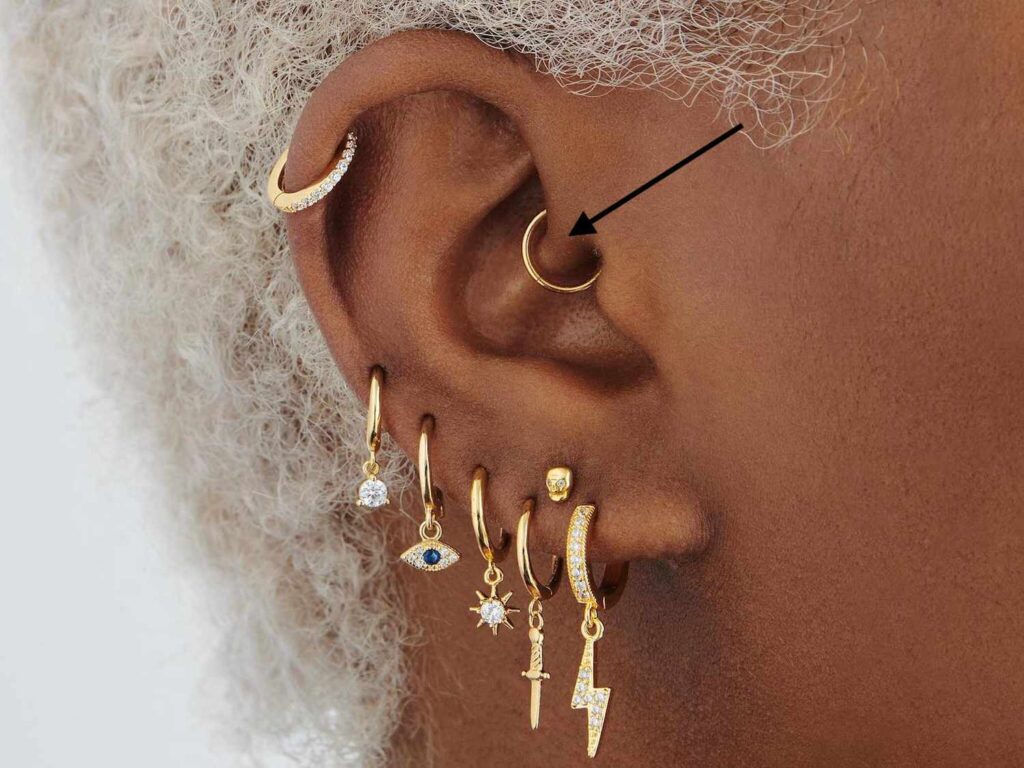
Aftercare for Daith Piercings
Proper aftercare is vital to ensure the healing and long-term success of daith piercings. Following the appropriate aftercare practices can minimize the risk of complications and promote optimal healing.
Cleaning with Sterile Saline or Piercing Cleanser
Regular cleaning of the daith piercing is essential to prevent infection and promote healing. It is recommended to clean the piercing twice a day using sterile saline solution or a piercing cleanser. Gently soak a cotton pad or cotton swab in the cleaning solution and apply it to the piercing, carefully removing any crust or debris.
Avoiding Manipulation of the Piercing
During the healing process, it is crucial to avoid unnecessary manipulation of the daith piercing. Touching the piercing with dirty hands or excessive twisting or turning of the jewelry can introduce bacteria and disrupt the healing process. It is important to resist the urge to play with or excessively clean the piercing to ensure proper healing.
Proper Hygiene Practices
Maintaining good overall hygiene is essential for the healing of daith piercings. It is important to avoid exposing the piercing to unnecessary moisture, such as swimming pools, hot tubs, and bodies of water, as they can harbor bacteria and increase the risk of infection. Additionally, it is advisable to avoid using any harsh or irritating skincare products near the piercing area.
Following these aftercare practices can help promote the healing of daith piercings and minimize the risk of complications. However, if you experience persistent pain, redness, swelling, discharge, or any other concerning symptoms, it is important to seek professional advice from a piercer or healthcare provider.
Potential Side Effects of Daith Piercings
While daith piercings can be a safe and exciting way to express oneself, there are potential side effects and risks associated with the procedure. Understanding these risks can help individuals make informed decisions regarding their daith piercings.
Inflammation
It is normal to experience some level of inflammation following a daith piercing. The body’s natural response to the injury is to send blood cells and fluids to the area, resulting in redness, swelling, and tenderness. However, if the inflammation persists or worsens over time, it may be an indication of an underlying issue, such as infection or an allergic reaction.
Infection
Infection is a potential risk with any piercing, including daith piercings. Symptoms of an infection can include increased pain, redness, swelling, and discharge accompanied by a foul odor. If you suspect an infection, it is important to seek prompt medical attention to prevent the infection from spreading or causing more severe complications.
Blood Infections
In rare cases, daith piercings can lead to blood infections. Blood infections, also known as septicemia, occur when bacteria from the piercing site enter the bloodstream. Symptoms of blood infections can include fever, chills, fatigue, and confusion. If you experience any of these symptoms, seek immediate medical attention.
Keloids
Keloids are raised, thickened areas of scar tissue that can develop around the piercing site. Some individuals may be more prone to keloid formation, especially if they have a history of keloids or other types of excessive scarring. If you are prone to keloids, it is important to discuss the potential risks with a professional piercer or healthcare provider before getting a daith piercing.
Changing Jewelry for Daith Piercings
Once the daith piercing has fully healed, some individuals may wish to change the jewelry to experiment with different styles or designs. However, it is important to approach jewelry changes with caution to avoid potential complications.
Waiting for Full Healing
It is advisable to wait until the daith piercing has fully healed before changing the jewelry. Changing the jewelry too soon can disrupt the healing process and increase the risk of infection or irritation. Consult with a professional piercer to determine the recommended healing duration for your specific piercing.
Professional Assistance for Jewelry Changes
If you are unsure about changing the jewelry yourself or want to ensure a smooth and hassle-free process, seeking professional assistance is recommended. Professional piercers have the experience and knowledge to safely change the jewelry, ensuring minimal discomfort and reducing the risk of complications.
Consult with a professional piercer to discuss your desired jewelry changes and receive guidance on the appropriate timing and technique for jewelry changes.
Conclusion
Daith piercings have gained popularity in recent years, with their unique location and stylish appearance. While the origins of daith piercings in Jewish culture may have deep historical significance, it is important to approach this practice with respect and sensitivity.
When considering getting a daith piercing, it is essential to consider the costs involved, the materials used, and the potential benefits and risks. Proper aftercare and hygiene practices are crucial to ensure optimal healing and minimize the risk of complications.
Overall, daith piercings can be a personal and meaningful way to express oneself. By understanding the origins, cost, materials, aftercare, and potential side effects associated with daith piercings, individuals can make informed decisions and enjoy their piercings safely. Remember to consult with a professional piercer or healthcare provider for personalized advice and guidance throughout the process.
Stylish.ae’s Ultimate Guide To Ear Piercings: From Lobe To Cartilage(Opens in a new browser tab)
The 16 Types of Ear Piercings: Choosing Based on Pain and Placement(Opens in a new browser tab)

